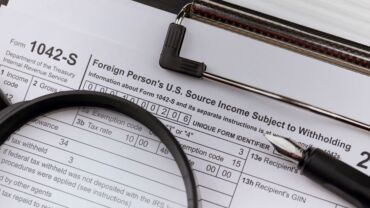Interim Final Rules: Requirements Related to Surprise Billing; Part II, 5 CFR Part 890, 26 CFR Part 54, 29 CFR Parts 2510 and 2590, 45 CFR Parts 147 and 149, 86 Fed. Reg. 55980 (Oct. 7, 2021)
The DOL, HHS, and IRS have released another round of guidance on the surprise medical billing requirements enacted as part of the Consolidated Appropriations Act, 2021 (CAA) (see our Checkpoint article). The CAA comprehensively revised and expanded the Affordable Care Act’s patient protection requirements to shield individuals from surprise bills for emergency services, air ambulance services furnished by a nonparticipating provider (i.e., an out-of-network provider or other provider that does not have a contractual relationship with the plan), and non-emergency services furnished by a nonparticipating provider at an in-network facility in certain circumstances (see our Checkpoint Question of the Week). Among other things, for out-of-network services that fall within the surprise billing protections, cost-sharing is restricted to in-network levels and surprise balance billing (i.e., seeking to collect from the patient more than the applicable cost-sharing amount) is prohibited. Regulations (Part I) established that participants in group health plans will pay cost-sharing for items and services that fall within the surprise billing rules’ scope based on the “recognized amount,” which generally will be the lesser of the “qualifying payment amount” (QPA) (i.e., the plan’s median in-network rate for an item or service) and the amount billed by the provider (see our Checkpoint article).
Part I also established rules for determining the amounts payable by a plan or insurer to a provider or facility for these out-of-network items and services, referred to as the “out-of-network rate,” including the use of a 30-day “open negotiation” period to determine the total out-of-network rate (including any cost-sharing). Building on the Part I regulations, Part II establishes an independent dispute resolution (IDR) process that out-of-network providers, plans, and insurers may use to resolve payment disputes after an unsuccessful open negotiation of the out-of-network rate. Here are highlights of the Part II regulations, which are generally applicable to group health plans and insurers for plan and policy years beginning on or after January 1, 2022:
-
Use of Certified IDR Entities. After a failed open negotiation (which is initiated with an Open Negotiation Notice), either party may initiate the required IDR process with a Notice of IDR Initiation. (Use of standardized versions of these forms and others is required.) The parties may jointly select a certified IDR entity to resolve the dispute, but if they cannot agree or the chosen entity has a conflict of interest, the agencies will select an entity. The parties will submit their offers for payment, with supporting documentation, to the certified IDR entity, which will issue a binding determination selecting one of the parties’ offers as the out-of-network rate. Both parties must pay an administrative fee ($50 each for 2022), and the non-prevailing party is responsible for the certified IDR entity fee for using the process. Technical Guidance 2021-01 announces the 2022 administrative fee, as well as the 2022 allowable ranges for certified IDR entity fees. There are specific deadlines for completing each step in the IDR process; a CMS Fact Sheet outlines the timeframes. A party that initiated the IDR process may not initiate another IDR process involving the same other party and the same (or a similar) item or service within 90 days after the initial determination.
-
QPA Is Presumed Out-of-Network Rate. The Part II regulations provide that when making a payment determination, the certified IDR entity must begin with the presumption that the QPA is the appropriate out-of-network rate. Parties may submit certain additional information, which the certified IDR entity must consider if it is credible, but for the certified IDR entity to deviate from the offer closest to the QPA, any information submitted must clearly demonstrate that the value of the item or service is materially different from the QPA. Otherwise, the certified IDR entity must select the offer closest to the QPA. The certified IDR entity may not consider usual and customary charges, the amount that would have been billed if the surprise billing rules had not applied, or any public payor payment or reimbursement rates.
-
Expanded External Review. The Part II regulations also amend existing external review regulations so that issues arising under the surprise billing rules fall within their scope (see our Checkpoint article). Significantly, the rules are amended to require that grandfathered health plans, which generally are exempt from requirements related to external review, must provide for external review of adverse benefit determinations for claims subject to the cost-sharing and surprise billing protections in the CAA.
EBIA Comment: The agencies are building out an IDR portal to be used for the IDR process. One possible piece of good news: The agencies reason that implementing the regulations’ IDR process will encourage predictable outcomes, which should reduce the use of the IDR process over time. For more information, see EBIA’s Health Care Reform manual at Sections XII.B.4 (“Expanded Patient Protections: Surprise Medical Billing (Emergency and Non-Emergency Services)”) and XV.F (“Overview of External Review Requirements”), EBIA’s Group Health Plan Mandates manual at Section XIII.B (“Patient Protections”), and EBIA’s Self-Insured Health Plans manual at Section XIII.C (“Federally Mandated Benefits”). See also EBIA’s ERISA Compliance manual at Section XXXIV.M (“External Review Requirements”).
Contributing Editors: EBIA Staff.










